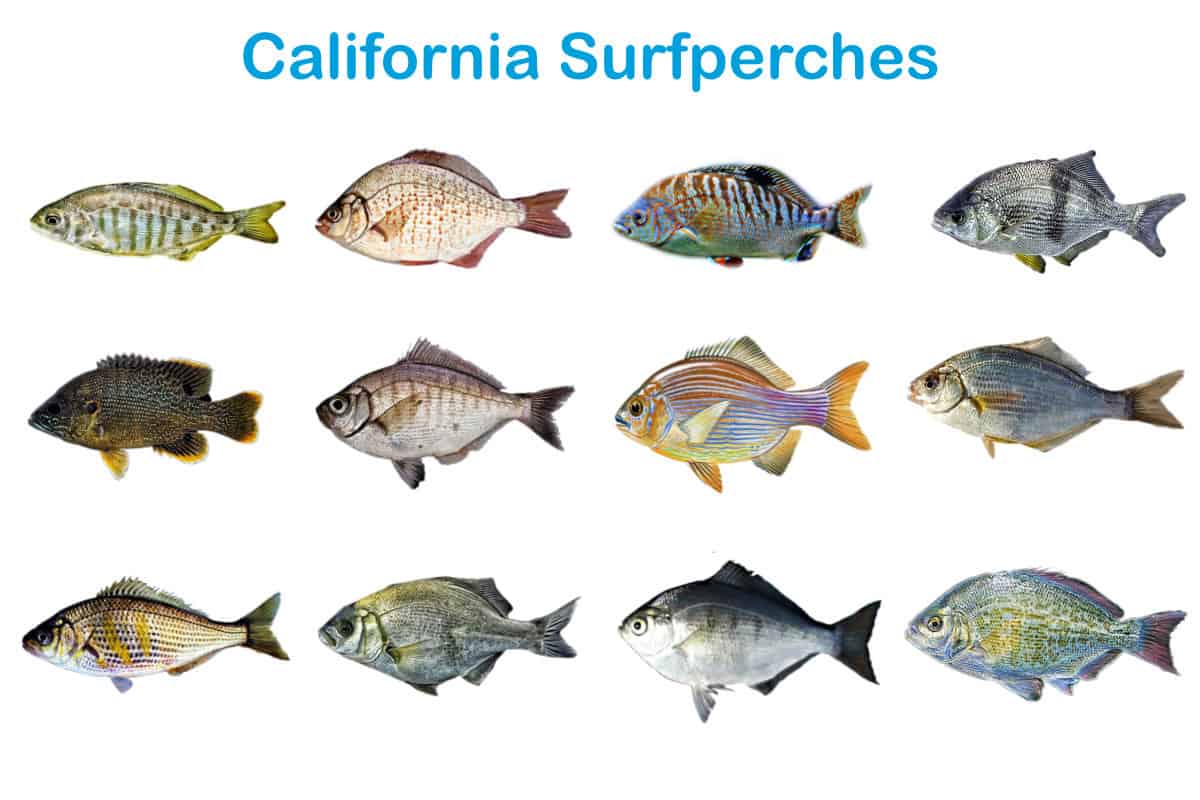Fishing is a trendy hobby and a source of adventure for those who are water-friendly and like to spend time on the sea. Before heading out to sea, let’s have a look at all the different types of surfperches you can catch in California.
The Different Types Of Surfperches You Can Catch In California Are:
- Barred Surfperch
- Redtail Surfperch
- Calico Surfperch
- Black Surfperch
- Rubber lip Seaperch
- Shiner Perch
- Silver Surfperch
- Walleye Surfperch
- Striped Seaperch
- Pile Perch
- White Seaperch
- Rainbow Seaperch
Fishermen usually have a basic understanding of how to fish, but a detailed insight covering the tips and tricks to your best catch is what you will read on further about.
If you’re looking to know everything about surf perch fishing![]() , this will entice you to set on your voyage sooner.
, this will entice you to set on your voyage sooner.
Let’s begin by learning a little about the different kinds of perch that you can catch on your next fishing trip to the sea.
I had come across roughly about twelve kinds of perch that might come in on your next catch.
These are basic details to help identify each of them based on their characteristics. This is going to be your guide to your next surfperch fishing voyage.
1. Barred Surfperch
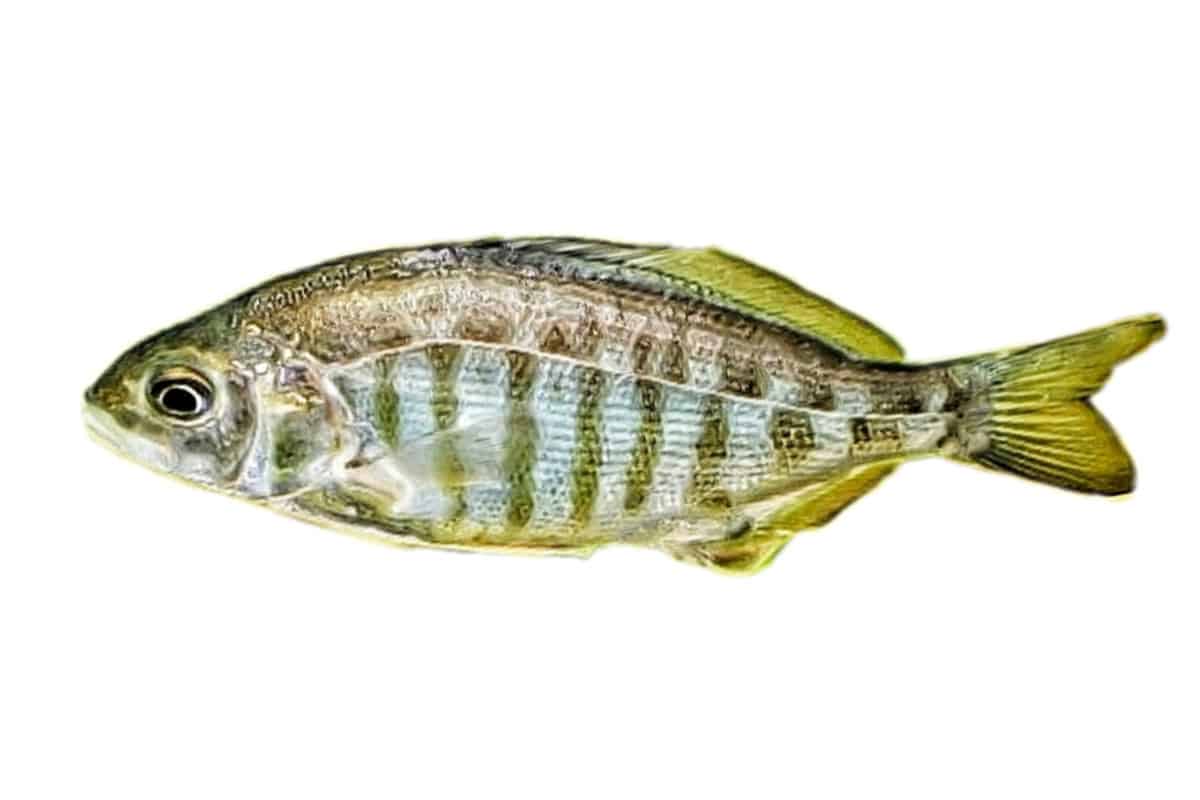
Popularly known as the California Perch, the Barred surfperch![]() is about 17″ in length and olive to yellow, green turning to silver below with spots on the side and barred in bronze, yellow or brassy color.
is about 17″ in length and olive to yellow, green turning to silver below with spots on the side and barred in bronze, yellow or brassy color.
The distinguishing factor is the blunt head and a large mouth on an oval and compressed body that separates it from the similar-looking perches like the Calico and Redtail.
The lower jaw is also shorter than the upper one. It belongs to the “Amphistichus Argenteus “species from the Embiotocidae family.
Some other names of the barred perch are silver perch, silver surf fish, sand perch, and surfperch.
Diet and Mating
Their major diet consists of sand crabs combined with crustaceans, some bean clams, and small crabs at last.
Perches are short-lived; the oldest males have lived up to 6 years and females up to 9.
Their young ones are born alive during spring and summers, usually between March and July.
Females give birth to 33 on average, and the highest number was recorded at 113 and the lowest being 4.
Juveniles are around 2.5 inches at birth and mature when they reach 6.5 inches.
Where are they found?
They are usually found in the surf zone environment along sandy beaches and have occurred ranging between Plaza Maria Bay, Baja California, to Bodega Bay, California.
They’ve also been found in waters as deep at 240 feet.
Fishing
The best timing to fish for a barred perch![]() is during the incoming tide when they are looking for a feed.
is during the incoming tide when they are looking for a feed.
Cut fish, mussels, blood worms, and sand crabs are popular forms of bait for a barred surfperch.
The largest surf perch caught weighed around 4.5 pounds and was 17″ inches in length.
Related Post: How To Surf Fish For Surfperch? A Complete![]() Guide
Guide
2. Redtail Surfperch
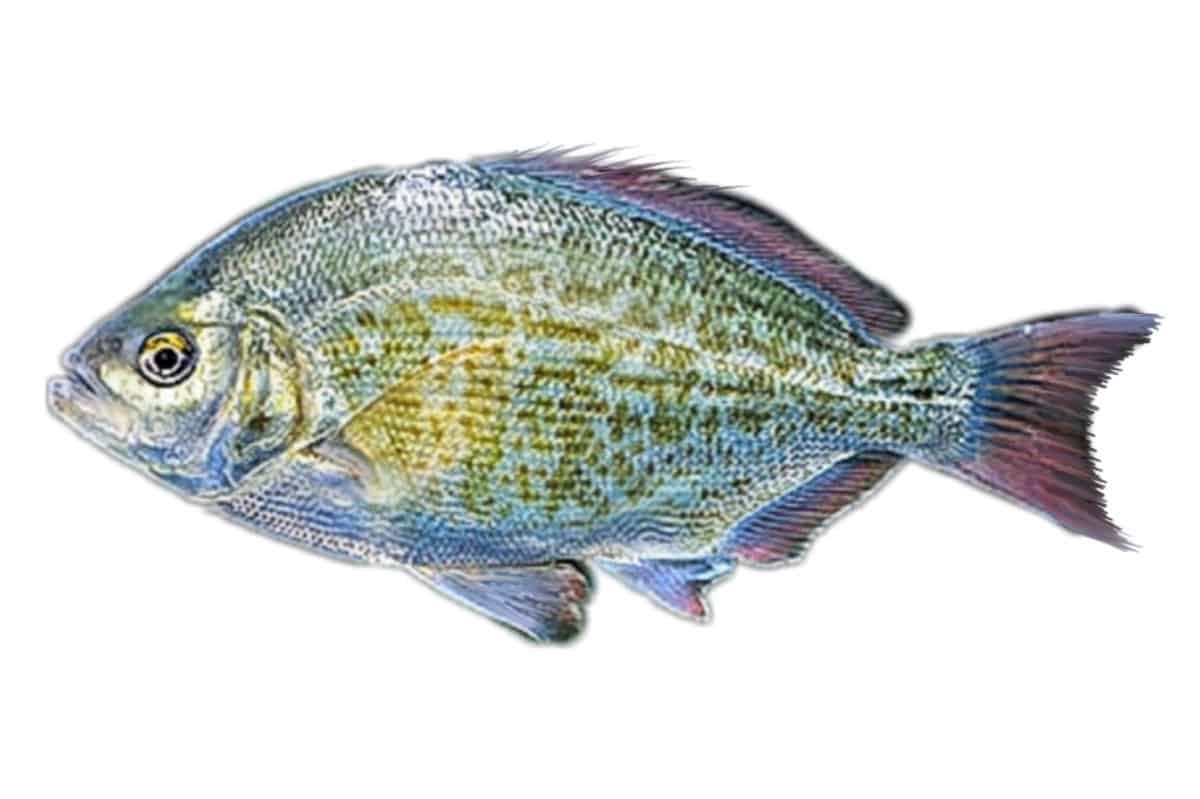
These are generally found barred and rarely seen spotted with a length of 16″. The redtail has the longest dorsal fin spines and is slightly elongated than the Calico.
Their species is “Amphistichus Rhodoterus, “belonging to the Embiotocidae family.
Their bodies are oval, compressed, and silver-colored combined with olive green marks and with bars on the side.
The tail can be pink to deep purple in color. Because of the difference in tail color, it can be identified separately from other perches like the barred and Calico.
Some other names the redtail is known by are redtail seaperch, Oregon porgie, porgie, and rosy surf fish.
Diet & Mating
The redtail surfperch![]() feeds not only small crustaceans, which is majorly preferred by them; they also feed on marine worms, mussels shrimps, and small crabs.
feeds not only small crustaceans, which is majorly preferred by them; they also feed on marine worms, mussels shrimps, and small crabs.
The mating period is during the fall season, and the young ones like all other perches are born alive during the following spring and summer, mostly from June to August, ranging between 27-51 in number.
They give birth to small identical adults, where the males mature in 2 years and females at the age of 4.
Where are they found?
They’re known to occur from Avila Beach, California to Vancouver, British Columbia, and has mostly been found northwards of San Francisco.
They are commonly found near the estuaries and embayment when they spawn and adjacent to beaches in rocky areas.
Fishing
The redtail surfperch are caught in large numbers during the spring and early summers when they spawn in sheltered inshore waters.
Tube worms, clams, and crabs can be used as baits when surf fishing and crab backs and light tackle in Humboldt bay.
Typically, an angler can easily fish a 3-pound size fish that weighs around 1.8 pounds.
Article you may interested in: How To Surf Fish For Striped Bass? A Complete Guide![]()
3. Calico Surfperch
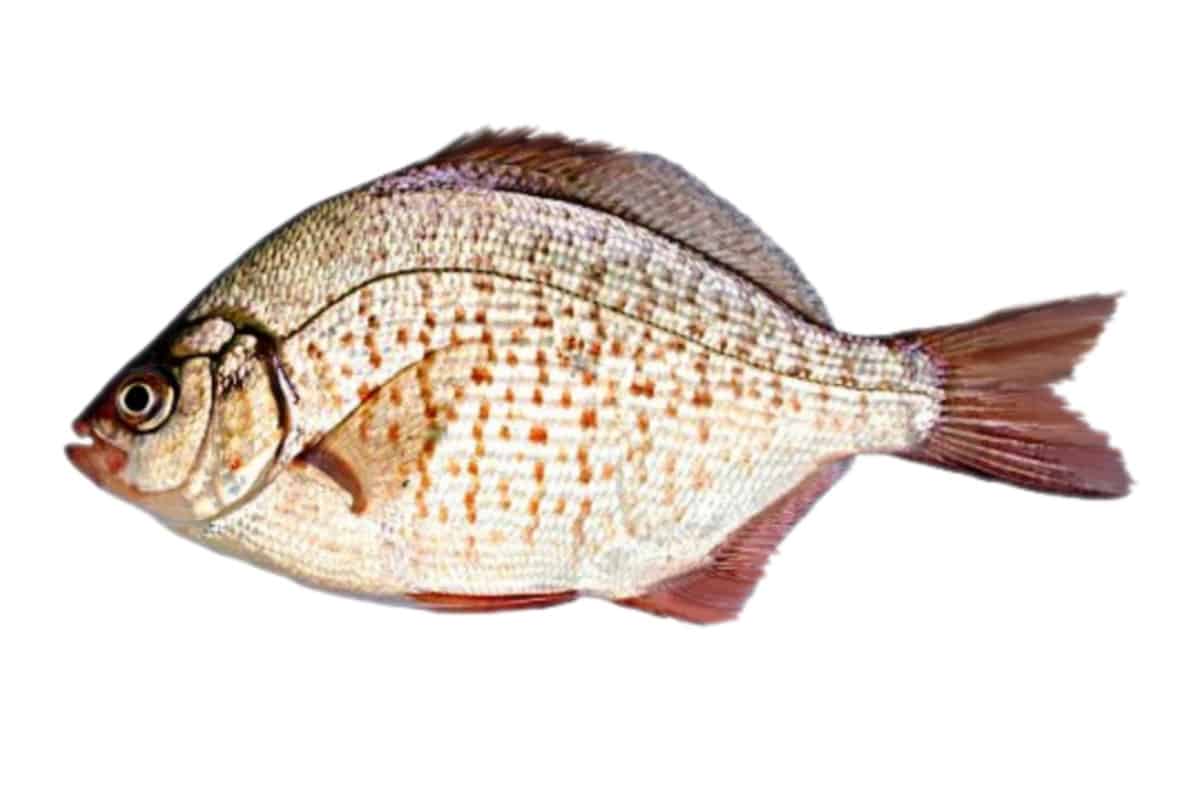
The Calico has the longest dorsal hard rays and soft rays that are almost equal in length and is identified with broken bars and spots on the sides.
Calico might look similar to redtail, but its disc-shaped and is only 12.5″ in length. Their fins are red, with the caudal fin being pink to dark red in color.
They belong to the “Amphistichus Koelzi “species from the Embiotocidae family. Their upper lip is at the lower edge of the eye.
Some other common names for the Calico are Humpback perch, surfperch, and porgie.
Diet & Mating
The calico mate during October and November and the young ones are birthed alive the following spring and early summers.
Their primary diet consists of mussels, crabs, shrimps, and clams.
Where are they found?
The calicos are known to be found in shallow waters or sandy shore areas. They have occurred ranging between Arroyo San Isidro, Northern Baja California, and shishi beach, Cape Flattery in Washington.
Fishing
A large amount of fish can be caught from underneath the piers![]() , and the school around inshore pilings. It’s a surf area fish caught in large numbers around central California piers.
, and the school around inshore pilings. It’s a surf area fish caught in large numbers around central California piers.
Live sand crabs, live sea worms, shrimps, mussels, or clams would be the best bait to catch the Calico.
4. Black Surfperch
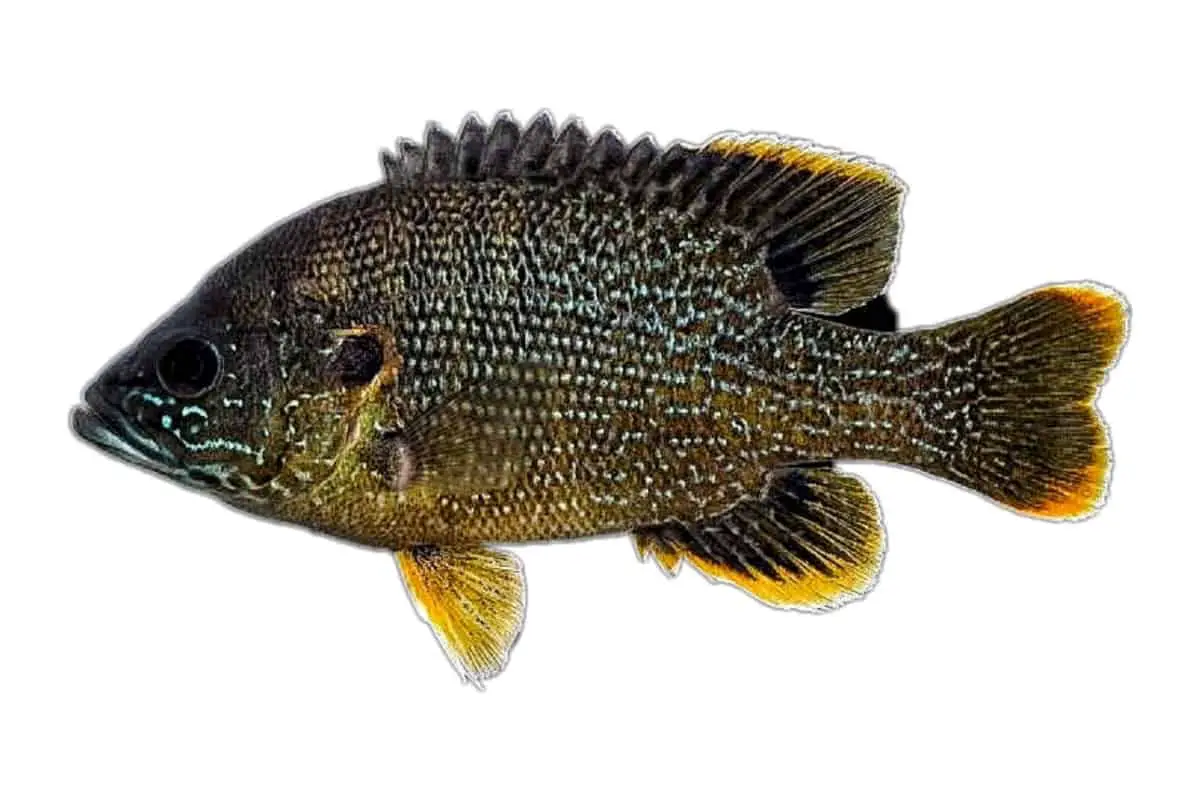
The black perch is also known as the “Pogie ” that has either orange or yellow lips, a dark mustache, scales with blue flecking, 15.5″ in.
In length and a bluish-white line at the end of the anal fin.
It’s easily identifiable by the large scales between the pelvic and pectoral fins.
They usually are black, brown, red, and yellow on the belly. It belongs to the “Embiotoca Jacksoni “species in the Embiotocidae family.
Some other common names it’s known by are pogie, bay perch, and butter mouth perch.
Diet & Mating
Unlike other perches, the Black seaperch feeds on crustaceans, gammarid amphipods, bryozoans, mollusks, and worms.
The young ones feed on ectoparasites from each other and other fish.
They are short-lived and can live up to 9 years. The mating season is usually around summer, and the young ones are birthed alive in the following spring.
Where are they found?
Around the eelgrass beds and rocky shore, areas are the places they are commonly found.
They have occurred in ranges between Punta Abreojos, Central Baja California, offshore Isla Guadalupe, and Fort Bragg, Mendocino county.
Fishing
Black seaperch is known to be caught mostly around piers or the inshore piling areas.
Some of your best piers would be imperial beach pier, Oceanside harbor pier, shelter island, and dana harbor, to name a few.
They are usually caught with a bait comprising of bloodworms, fresh mussels, pieces of shrimp, and rock crabs.
5. Rubber lip Seaperch
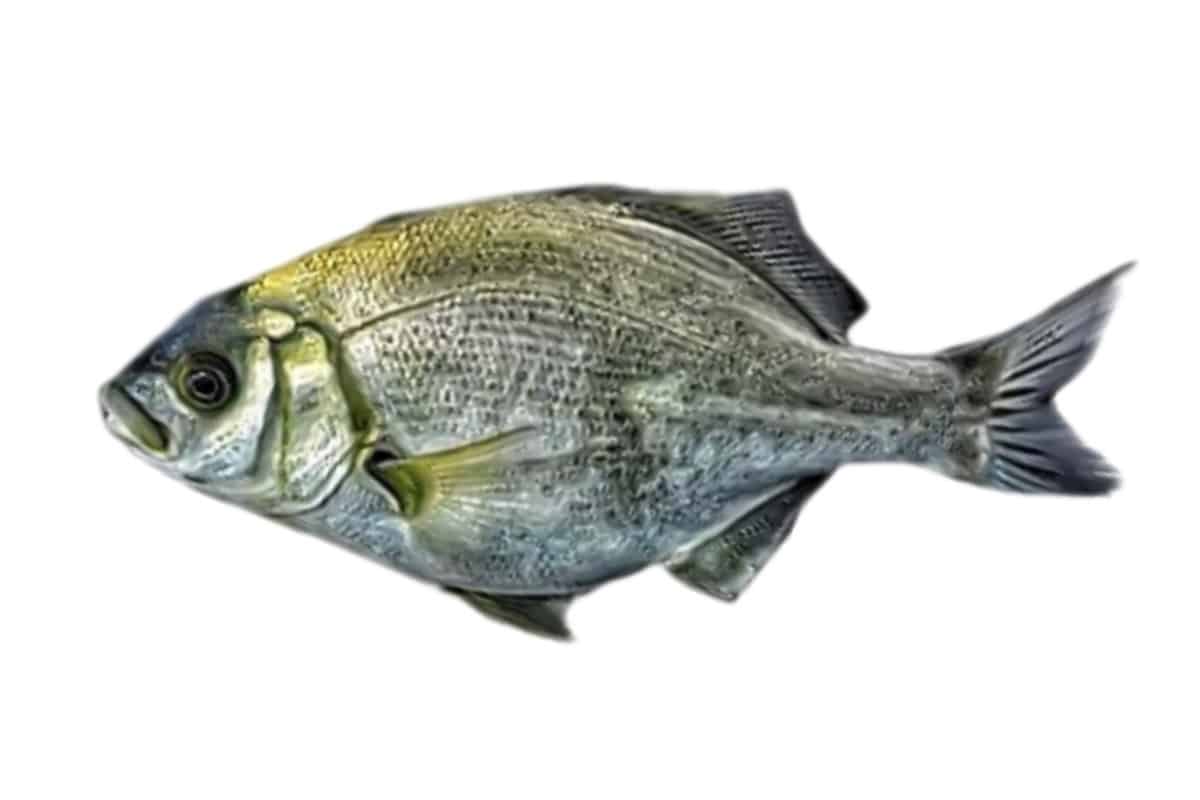
This perch is 18.5″ in. Which is a little lengthier as compared to other surfperch and has thick rubbery lips that are white or pink, and is a little dark with silver and brassy color on the back fading into a tan below.
The largest of the rubber lip![]() was recorded at 19.6 inches in length. This perch is also the largest ocean perch among all other perches.
was recorded at 19.6 inches in length. This perch is also the largest ocean perch among all other perches.
They belong to the “Rhacochilus Toxotes “species from the Embiotocidae family.
The young ones have two or one vertical bars that aren’t seen on adults. They have a largemouth, and the lower jaw is shorter than the upper.
They are commonly known as the butter mouth, liver lip, porgee, sprat, and pile perch.
Diet & Mating
This large perch feeds mostly on shrimps, octopus, and crabs, while the young ones feed on tiny snails, mussels, worms, and small crabs.
The juveniles are born alive by the female that can contain up to 21 fishes in number recording a little over 3.5 inches in length.
Where are they found?
Their occurrences have ranged between Thurloe head in Baja California to the Russian Gulch State Beach, California, where they frequent the tide pools, bays, harbors, and the rocky areas.
Anglers have been able to catch the rubber lip on shores, piers, and skiffs.
Fishing
Recreational anglers, mostly using the hook and line catches, have taken in large numbers from the Monterey Bay. Rubber lip baits can be sandworms, clams, mussels, and shrimps.
6. Shiner Perch
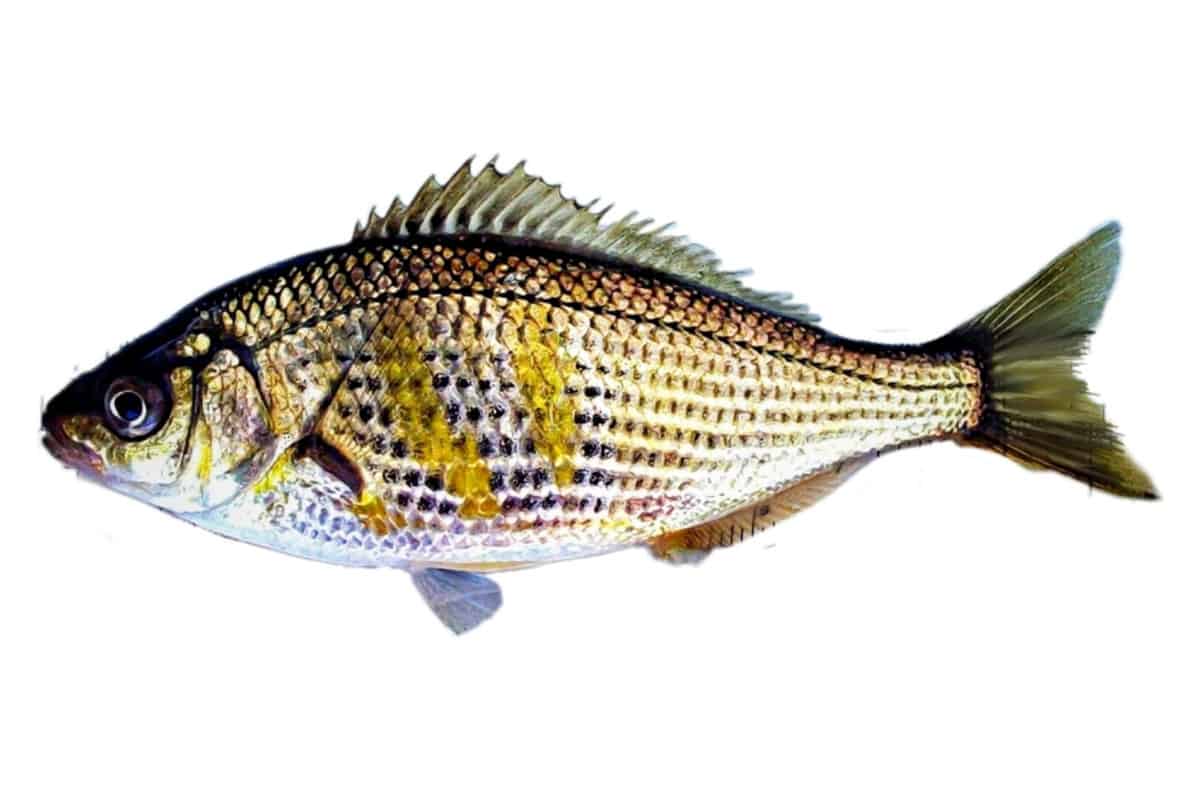
Shiner perch![]() is not to be confused with other silver or shiny perch. This is identified by the faint yellow bars on the sides, with the males only having them during winter.
is not to be confused with other silver or shiny perch. This is identified by the faint yellow bars on the sides, with the males only having them during winter.
It only goes to a length of 8″ inches and usually has dark speckling on the sides. Pregnant females were only 6.75″ inches, and they only weighed about 3 ounces.
Their species is called “Cymatogaster aggregate, “belonging to the Embiotocidae family.
The males turn dark to almost black during breeding and have a black spot on each side of the snout.
Their mouths are small, and the head is short on a compressed oval body.
The shiner perch are commonly known by other names like shiner seaperch, yellow shiner, seven-eleven perch, and bay perch.
Diet & Mating
They mostly feed on invertebrates and small crustaceans. Apparently, females are short-lived, and during mating, the males follow their mates with consistency in an effort to keep the other fish from approaching.
The mating takes place during the summers, and the young ones are born the following spring or summers.
Where are they found?
Frequently seen around pier pilings. The perch are caught almost from every fishing point like the docks, rocks, shore, and the pier.
Their common occurrences have been anywhere from the San Quintin Bay in Baja California all the up to Port Wrangell in Alaska.
Shiners are abundantly found by the wharves and piers and around eelgrass beds, which is usually calm water.
Fishing
Many young anglers get to catch this perch with ease around the California coast. They’ve been caught in waters as deep as 350-480 feet using nets, and divers have observed them there.
This abundantly available fish can be caught using any kind of bait and any standard of fishing line as long as the hook is small enough to fit in their mouths.
7. Silver Surfperch
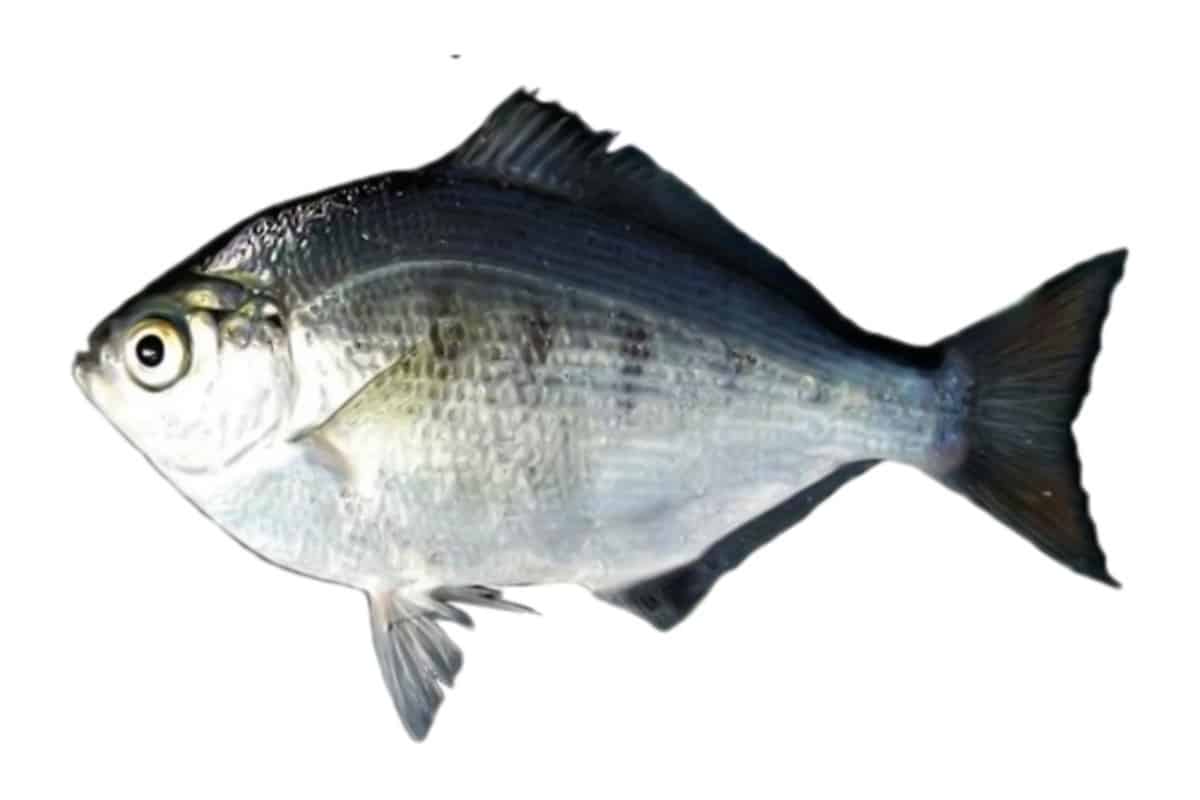
Like the name itself, it is silver in color, but the tail usually has a pink combination, a dark patch at the base of the anal fin, plain pelvic fins, and is 10.5″ in. In length.
The species is called “Hyperprosopon Ellipticum, “belonging to the Embiotocidae family.
It’s quite similar to the Walleye except for the silver color on the pelvic fins.
It’s identified by the tail that’s usually pink in color, sometimes with an orange spot on the anal fin. Another feature of identification is the small head and the largemouth.
It’s a silver bodied perch with dusky bards on eh sides. It’s commonly also known as the “shiner. “
Diet & Mating
The shiner usually lives off on algae, crustaceans, shrimp, and amphipods.
Mating season for the silver surfperch is during the fall and early winter, and the young ones are born alive the following spring or summer anywhere between 3-17 in number.
Where are they found?
Their occurrences have ranged between Vancouver Island, British Columbia near Tofino and Baja California, Rio San Vicente, and Schooner cove.
They’re found usually in shallow waters in a sandy environment like the sandy surf zone and fished from shallow rocks and in bays.
Fishing
The Silver surfperch ![]() is one of the most commonly caught perch by most recreational anglers around the northern and central California region. This being said, it’s also easy to catch, seen in large numbers on the shore and the surf.
is one of the most commonly caught perch by most recreational anglers around the northern and central California region. This being said, it’s also easy to catch, seen in large numbers on the shore and the surf.
8. Walleye Surfperch
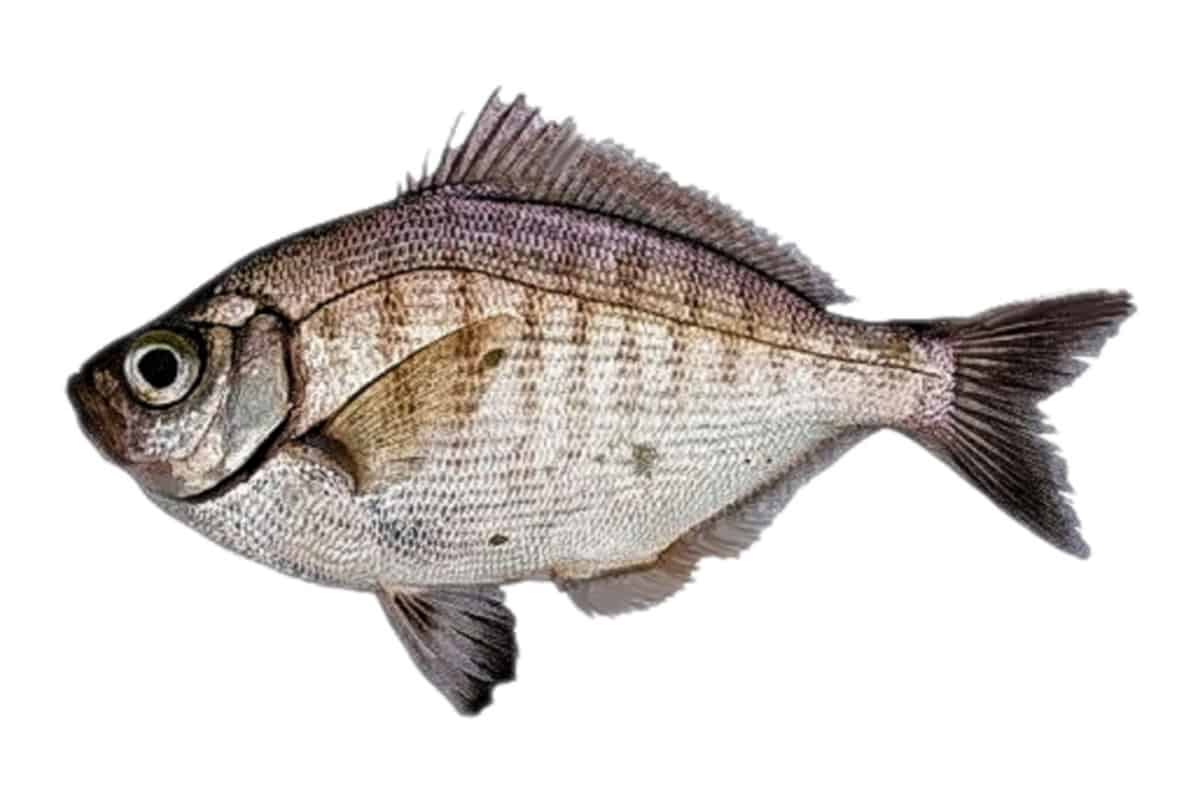
The Walleye![]() comes in two variations, barred and unbarred that has big eyes, black tips on pelvic fins, and is about 12″ in. in length.
comes in two variations, barred and unbarred that has big eyes, black tips on pelvic fins, and is about 12″ in. in length.
Their species is called “Hyperprosopon Argenteum, “belonging to the Embiotocidae family.
A distinguishing mark of identification from other surf perches is the black tips on the ventral fins and black borders on the anal fins and the tail.
It’s silver in color and shady towards the back.
They’ve got big eyes, a small head, and a small downward slanted mouth. One other thing about the Walleye is the oval shape with a compressed body.
The walleye surfperch is commonly referred to as walleye surf fish, white perch, china pompano, and Walleye seaperch.
Diet and Mating
The male and female are found to be mating during October, November, and December months only when they pair up, and intruder males are dealt with harsh retaliation on their snouts.
They’re born the following spring and could range anywhere between 1-19 in number and about 1.5 inches in length depending upon the mother’s size.
They get matured by the fall season, and most are part of the next breeding perches. Their diet is merely small crustaceans only.
Where are they found?
Walleye surfperch is known to occur from and between Vancouver Island, British Columbia to Pt. San Rosarito, Baja California.
Anglers aiming to fish walleyes are in for a surprise since they will be available in large numbers mostly found in dense schools of fish, which can be around 6-8 feet I depth that also includes many other kinds of fish.
Fishing
They can be easily found and caught in a bay environment like the piers, rocks, and the surf. Squids, shrimp, mussels, pieces of fish, and worms are good forms of bait to catch an easily available perch any time of the year.
9. Striped Seaperch
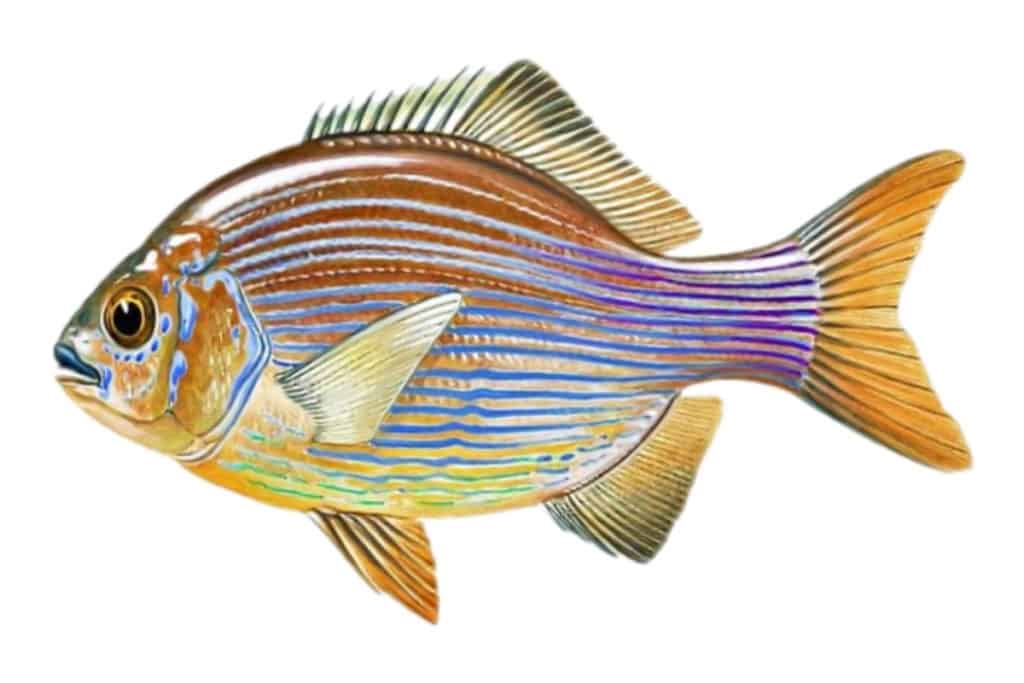
A 15″ in. Lengthy perch has dark and light color variations combining orange and blue colors horizontally striped.
This striped perch is identified by the blue spots on its head. They have copper to brown colored dorsal fins.
It belongs to the “Embiotoca Lateralis” species in the Embiotocidae family.
They are heavy eaters who feed throughout the day and have a relatively large mouth that distinguishes them easily from others.
It’s also commonly known as the blue perch, striped surf fish and rainbow perch.
Diet & Mating
It’s known to have a large diet that includes crabs, shrimps, marine worms, crustaceans, mollusks, and occasionally brittle stars. They feed on large prey as well when available.
Their life span is up to 10 years. The young ones are born alive in late spring to early summer, and mating happens in November and December of the previous year.
Where are they found?
They’re usually seen around rocky areas with algal growth and found in depths around 55 feet. However, they prefer shallow waters up to 18 feet deep.
They have occurred ranging from Punta Cabras, Northern Baja California to Klakas inlet, South Eastern Alaska.
Fishing
The best place to catch the striped perch would be the central and northern California piers like the Santa Cruz wharf, San Francisco Municipal Pier, Point Arena Pier, and others.
These often move around in schools. So, if you end up catching one, you might get more. Fresh Mussels, Raw shrimp, live pile worms, rock crabs, crab backs and tube worms.
10. Pile Perch
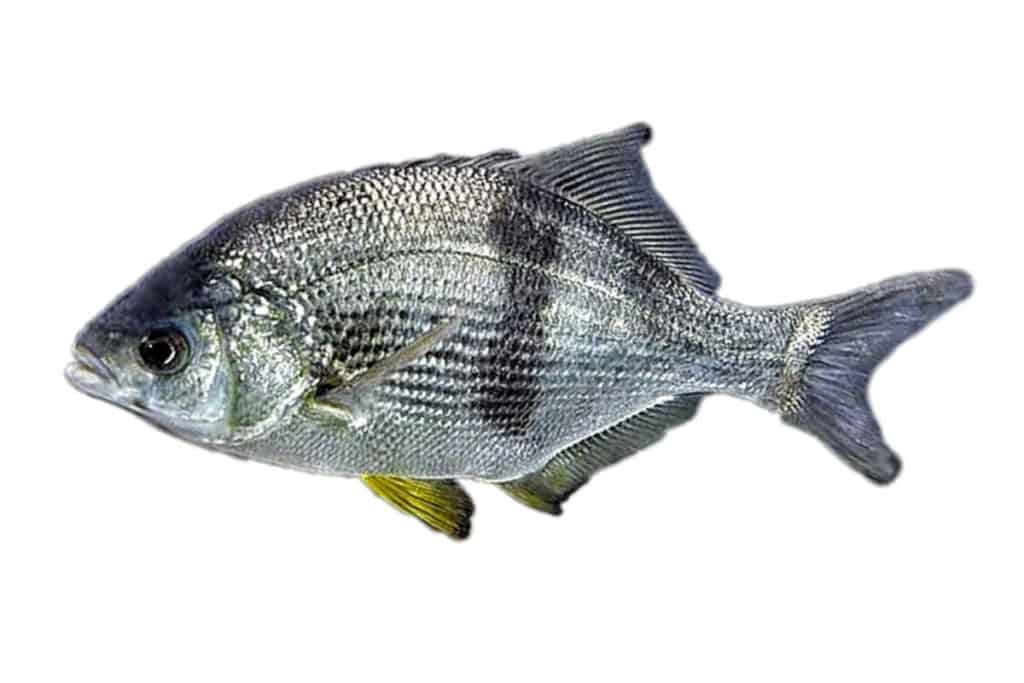
The body of the pile perch is a slim, oval shape that is a dark gray or brown color. The sides and the belly are dominated by a silvery luster.
The back and sides have darker blotches. Young pile perch has vertical bars that disappear with age.
Part of the Rhacochilus Vacca (Girard), the Pile Perch has 9-11 dorsal spines and 21-25 dorsal soft rays.
Diet and Mating
Pile Perch are carnivorous and love mussels, barnacles, sails, mud shrimps, small shore crabs and pile worms. Their diet does however vary between seasons and locations.
They get their food from the protruding surfaces and the bottom of the littoral zone. They live for about 10 years and females increase in size as they get older.
Males reach a size of about 1,120 g at a length of 430 mm and females 2,000 g at 490 mm.
Most females mature in their third year. Mating happens in the fall and then there is a delay of 3 months before fertilization and gestation is 6 months.
This means that the young are born between the end of June and early August. The number of embryos produced increases with the age and size of the fish.
Where are they found?
Pile perch are found along the west coast of North America from Wrangell along the southeast Alaskan coastline to Guadalupe Island, off north-central Baja California and down to Mexico.
Pile Perch can be found around kelp along rocky shores with pilings and underwater structures at a depth of up to 46 m (150 ft).
Fishing
Fish for Pile Perch in rocky areas over mussel beds, at the base of rocks, from jetties, around the pilings, and under docks. Mussels, pile worms, and small shore crabs are the best baits to use when fishing from the rocks or around them.
Are Surfperches a Common Fish to Catch While Surf Fishing in California?
Yes, surfperches are a common fish species in California surf. These saltwater fish are often found in the shallow waters along the coast. Anglers frequently catch surfperches while surf fishing in California, making them a popular target for those seeking a thrill in the waves.
11. White Seaperch
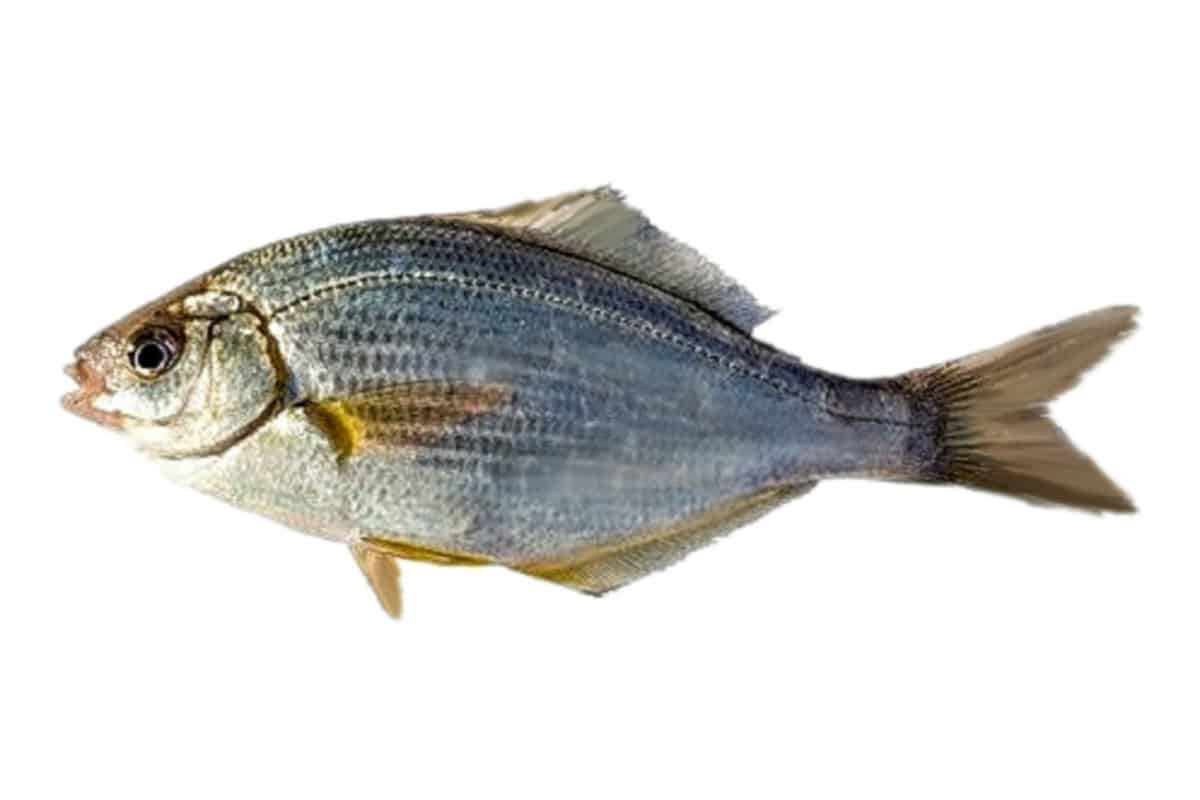
White Seaperch, also known as Splittail perch or forktail perch and as mojarra Lomo rayado in Mexico, are very similar to Pile Perche.
Their coloring is different though. They have olive or light silver on the back and a white or dark silver on the belly.
The pelvic and anal fins are a dusky rose-orange with a yellow base. The mouth sometimes has dark spots and they can be up to 12 ½ inches long.
Diet and Mating
Fish eggs generally make up the majority of a White Seaperch’s diet. They also like small minnows like mud minnows and fathead minnows, grass shrimp, razor clams, and bloodworms.
White Seaperch are prolific and the female can spawn over 150,000 eggs in one spawning session.
Multiple males will attend a spawning female and many of them will fertilize her eggs. After just 6 days of fertilization the young hatch.
Where are they found?
White Seaperch is found in shallow-water areas around rocks and fine sand, in bays, and on the oceanfront. You’ll find them from Bahia San Carlos, central Baja California, to Vancouver Island, British Columbia.
Fishing
Catch White Seaperch in every pier in the areas mentioned above but in southern California, they’re more often found near harbors and bays.
Popular spots are San Francisco Bay, the Shelter Island Pier, Oceanside Harbor Pier, Dana Point Harbor Pier, Santa Cruz Wharf, Pacifica Pier, San Francisco Municipal Pier, Santa Cruz Wharf, Berkeley Pier, Fort Baker Pier, and the Commercial Street Dock (Eureka).
They aren’t as fussy as Pile Perch when it comes to feeding and will take almost any kind of bait but do bite better with mussels, live shrimp and live seaworms.
12. Rainbow Surfperch
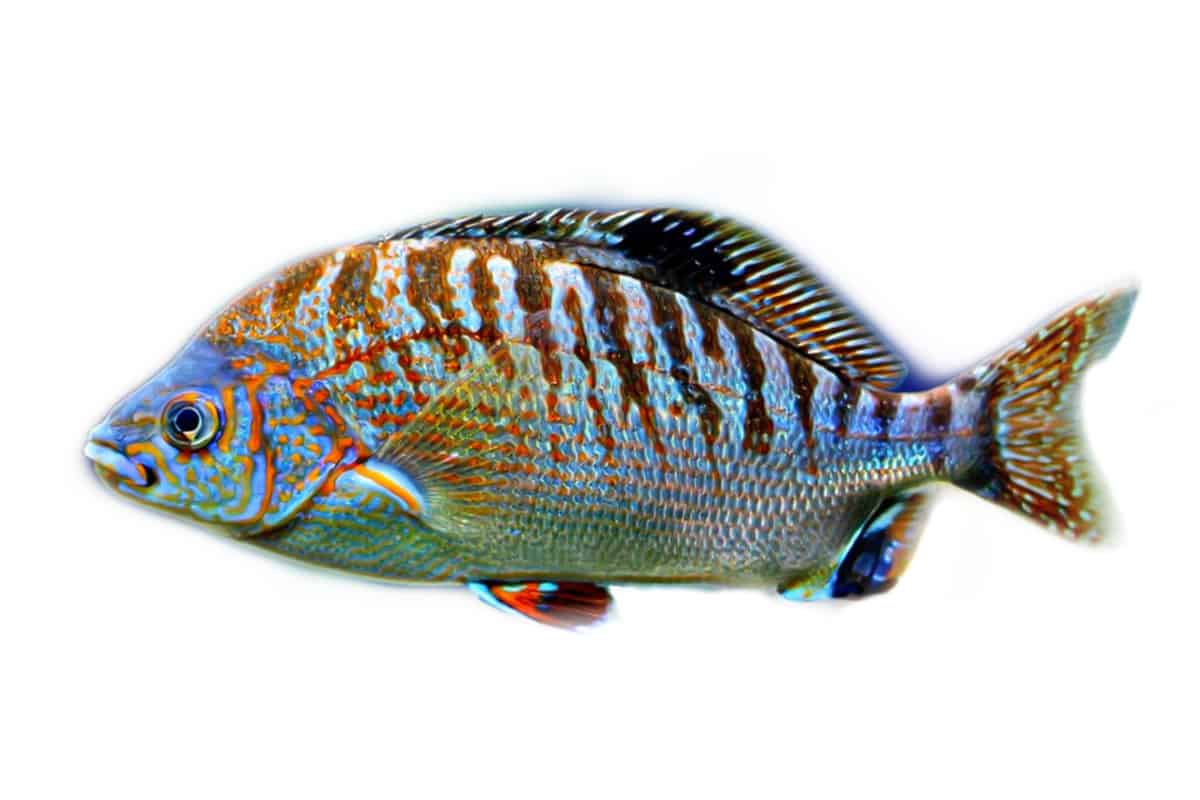
The Rainbow Surfperch were called bugara or moharra by Portuguese fishermen in the 19th-century and are known in Mexico as mojarra arcoiris or perca.
They have a compressed oval body but are more elongated than most perch. They are a really beautiful fish with red and blue stripes on their sides, pelvic fins that are bright blue and red-orange.
The soft dorsal fin rays and anal fin have a dark spot on them. Their base color is silver and the overall coloring can change depending on the season or the age of the fish. They can be up to 18 inches long.
Diet and Mating
Isopods, amphipods, snails and brittle stars are what Rainbow Surfperch generally feed on. As with all surfperch fertilization is internal and they are viviparous.
They give birth to up to 22 fully-formed fish that are exact miniature replicas of the adult Rainbow Surfperch.
Where are they found?
Rainbow Surfperch prefers shallow-water rocky shores to sandy ones. You’ll never find them in the surf.
They prefer keeping to the edges of kelp forests and go down to 40 meters (130 ft).
You’ll find these fish along the Pacific coast of North America from Cape Mendocino, California to northern Baja California and Mexico.
Fishing
Rocky shore and Pier anglers catch a lot of Rainbow Surfperch although they are only found at a few piers.
Gaviota Pier, Fort Baker Pier, Coast Guard Pier (Monterey), Monterey Wharf #2, San Francisco Municipal Pier, Santa Cruz Wharf, Fort Point Pier and Elephant Rock Pier are your best bets.
Fish directly on the bottom using pile worms, mussels, or small live rock crabs as bait. Because the Rainbow Surfperch is small it is best to use a high/low leader or tie small size 6 or 8 hooks directly to your line.
Summary
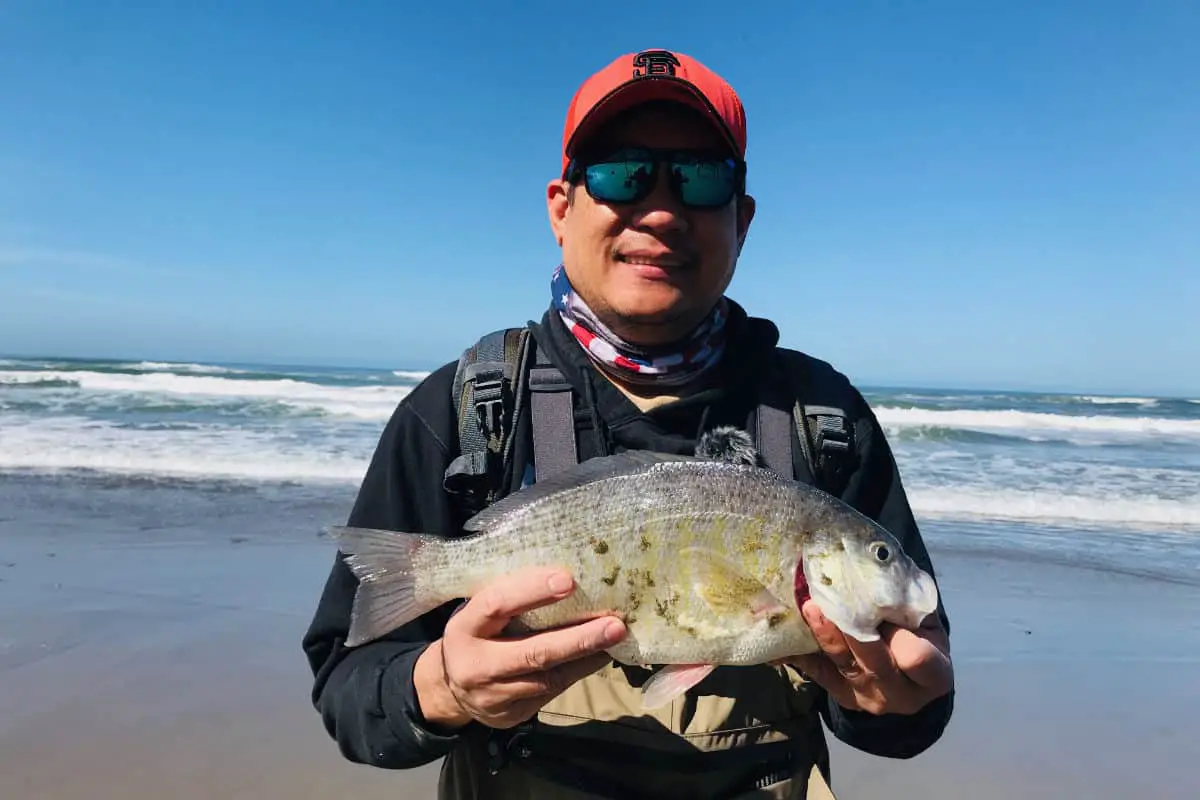
The Surfperch family has 22 species. These are just the common surfperches![]() that you can find in and popular to catch in California. They are fun to catch and delicious to eat. If you want to learn how to catch surf perch
that you can find in and popular to catch in California. They are fun to catch and delicious to eat. If you want to learn how to catch surf perch![]() . Check this complete guide on how to surf fish for surfperch.
. Check this complete guide on how to surf fish for surfperch.

